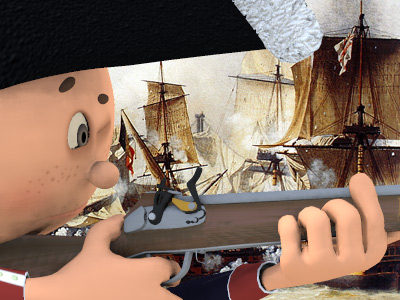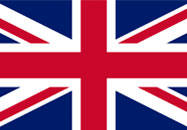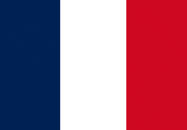Napoleonic Wars (1803-1815)
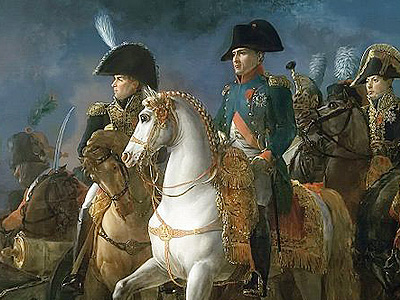
War of the Fourth Coalition 1806–1807
Within months of the collapse of the Third Coalition, the Fourth Coalition (1806–07) against France was formed by Britain, Prussia, Russia, Saxony, and Sweden. In July 1806, Napoleon formed the Confederation of the Rhine out of the many tiny German states which constituted the Rhineland and most other western parts of Germany. He amalgamated many of the smaller states into larger electorates, duchies, and kingdoms to make the governance of non-Prussian Germany smoother. Napoleon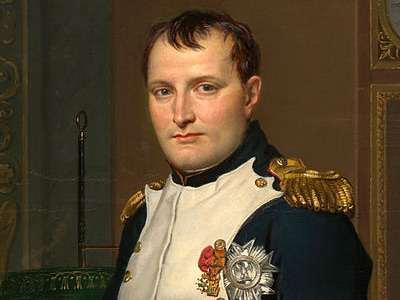 Napoleon Bonaparte (1769-1821), was a French military and political leader who rose to prominence during the French Revolution and led several successful campaigns during the French Revolutionary Wars. As Napoleon I, he was Emperor of the French from 1804 until 1814, and again in 1815. One of the greatest commanders in history, his wars and campaigns are studied at military schools worldwide. Napoleon Bonaparte » elevated the rulers of the two largest Confederation states, Saxony and Bavaria, to the status of kings.
Napoleon Bonaparte (1769-1821), was a French military and political leader who rose to prominence during the French Revolution and led several successful campaigns during the French Revolutionary Wars. As Napoleon I, he was Emperor of the French from 1804 until 1814, and again in 1815. One of the greatest commanders in history, his wars and campaigns are studied at military schools worldwide. Napoleon Bonaparte » elevated the rulers of the two largest Confederation states, Saxony and Bavaria, to the status of kings.

Napoleon in Berlin (Meynier). After defeating Prussian forces at Jena, the French Army entered Berlin on 27 October 1806.

Napoleon in Berlin (Meynier). After defeating Prussian forces at Jena, the French Army entered Berlin on 27 October 1806
( Click image to enlarge)
In August 1806, the Prussian king, Frederick William III, decided to go to war independently of any other great power. The army of Russia Russian Empire was an empire and the final period of the Russian monarchy from 1721 to 1917, ruling across large parts of Eurasia. The rise of the Russian Empire coincided with the decline of neighbouring rival powers: the Swedish Empire, the Polish–Lithuanian Commonwealth, Qajar Iran, the Ottoman Empire, and Qing China. Russia remains the third-largest empire in history, surpassed only by the British Empire and the Mongol Empire., a Prussian ally, in particular was too far away to assist. On 8 October 1806, Napoleon unleashed all the French forces east of the Rhine into Prussia
Russian Empire was an empire and the final period of the Russian monarchy from 1721 to 1917, ruling across large parts of Eurasia. The rise of the Russian Empire coincided with the decline of neighbouring rival powers: the Swedish Empire, the Polish–Lithuanian Commonwealth, Qajar Iran, the Ottoman Empire, and Qing China. Russia remains the third-largest empire in history, surpassed only by the British Empire and the Mongol Empire., a Prussian ally, in particular was too far away to assist. On 8 October 1806, Napoleon unleashed all the French forces east of the Rhine into Prussia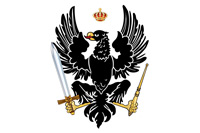 The Kingdom of Prussia was a German kingdom that constituted the state of Prussia between 1701 and 1918. It was the driving force behind the unification of Germany in 1871 and was the leading state of the German Empire until its dissolution in 1918. Although it took its name from the region called Prussia, it was based in the Margraviate of Brandenburg. Its capital was Berlin.. Napoleon defeated a Prussian army at Jena (14 October 1806), and Davout defeated another at Auerstädt on the same day. 160,000 French soldiers (increasing in number as the campaign went on) attacked Prussia, moving with such speed that they destroyed the entire Prussian army as an effective military force. Out of 250,000 troops the Prussians sustained 25,000 casualties, lost a further 150,000 as prisoners, 4,000 artillery pieces, and over 100,000 muskets. At Jena, Napoleon had fought only a detachment of the Prussian force. The battle at Auerstädt involved a single French corps defeating the bulk of the Prussian army. Napoleon entered Berlin on 27 October 1806. He visited the tomb of Frederick the Great and instructed his marshals to remove their hats there, saying, "If he were alive we wouldn't be here today". Napoleon had taken only 19 days from beginning his attack on Prussia to knock it out of the war with the capture of Berlin and the destruction of its principal armies at Jena and Auerstädt. Saxony left Prussia, and together with small states from north Germany, allied with France
The Kingdom of Prussia was a German kingdom that constituted the state of Prussia between 1701 and 1918. It was the driving force behind the unification of Germany in 1871 and was the leading state of the German Empire until its dissolution in 1918. Although it took its name from the region called Prussia, it was based in the Margraviate of Brandenburg. Its capital was Berlin.. Napoleon defeated a Prussian army at Jena (14 October 1806), and Davout defeated another at Auerstädt on the same day. 160,000 French soldiers (increasing in number as the campaign went on) attacked Prussia, moving with such speed that they destroyed the entire Prussian army as an effective military force. Out of 250,000 troops the Prussians sustained 25,000 casualties, lost a further 150,000 as prisoners, 4,000 artillery pieces, and over 100,000 muskets. At Jena, Napoleon had fought only a detachment of the Prussian force. The battle at Auerstädt involved a single French corps defeating the bulk of the Prussian army. Napoleon entered Berlin on 27 October 1806. He visited the tomb of Frederick the Great and instructed his marshals to remove their hats there, saying, "If he were alive we wouldn't be here today". Napoleon had taken only 19 days from beginning his attack on Prussia to knock it out of the war with the capture of Berlin and the destruction of its principal armies at Jena and Auerstädt. Saxony left Prussia, and together with small states from north Germany, allied with France France, officially the French Republic is transcontinental country predominantly located in Western Europe and spanning overseas regions and territories in the Americas and the Atlantic, Pacific and Indian Oceans. France reached its political and military zenith in the early 19th century under Napoleon Bonaparte, subjugating much of continental Europe and establishing the First French Empire. .
France, officially the French Republic is transcontinental country predominantly located in Western Europe and spanning overseas regions and territories in the Americas and the Atlantic, Pacific and Indian Oceans. France reached its political and military zenith in the early 19th century under Napoleon Bonaparte, subjugating much of continental Europe and establishing the First French Empire. .
In the next stage of the war, the French drove Russian forces out of Poland and employed many Polish and German soldiers in several sieges in Silesia and Pomerania, with the assistance of Dutch and Italian soldiers in the latter case. Napoleon then turned north to confront the remainder of the Russian army and to try to capture the temporary Prussian capital at Königsberg. A tactical draw at Eylau (7–8 February 1807), followed by capitulation at Danzig (24 May 1807) and the Battle of Heilsberg (10 June 1807), forced the Russians to withdraw further north. Napoleon decisively beat the Russian army at Friedland (14 June 1807), following which Alexander had to make peace with Napoleon at Tilsit (7 July 1807). In Germany and Poland, new Napoleonic client states, such as the Kingdom of Westphalia, Duchy of Warsaw, and Republic of Danzig, were established.
By September, Marshal Guillaume Brune completed the occupation of Swedish Pomerania, allowing the Swedish army to withdraw with all its munitions of war.
Scandinavia and Finland
Britain's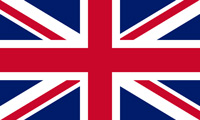 The United Kingdom of Great Britain and Ireland was a sovereign state in Northwestern Europe that comprised the entirety of the British Isles between 1801 and 1922. The United Kingdom, having financed the European coalition that defeated France during the Napoleonic Wars, developed a large Royal Navy that enabled the British Empire to become the foremost world power for the next century. first response to Napoleon's Continental System was to launch a major naval attack against Denmark. Although ostensibly neutral, Denmark was under heavy French and Russian pressure to pledge its fleet to Napoleon. London could not take the chance of ignoring the Danish threat. In August 1807, the Royal Navy besieged and bombarded Copenhagen, leading to the capture of the Dano-Norwegian fleet, and assuring use of the sea lanes in the North and Baltic seas for the British merchant fleet. Denmark joined the war on the side of France, but without a fleet it had little to offer, beginning an engagement in a naval guerrilla war in which small gunboats attacking larger British ships in Danish and Norwegian waters. Denmark also committed themselves to participate in a war against Sweden together with France and Russia.
The United Kingdom of Great Britain and Ireland was a sovereign state in Northwestern Europe that comprised the entirety of the British Isles between 1801 and 1922. The United Kingdom, having financed the European coalition that defeated France during the Napoleonic Wars, developed a large Royal Navy that enabled the British Empire to become the foremost world power for the next century. first response to Napoleon's Continental System was to launch a major naval attack against Denmark. Although ostensibly neutral, Denmark was under heavy French and Russian pressure to pledge its fleet to Napoleon. London could not take the chance of ignoring the Danish threat. In August 1807, the Royal Navy besieged and bombarded Copenhagen, leading to the capture of the Dano-Norwegian fleet, and assuring use of the sea lanes in the North and Baltic seas for the British merchant fleet. Denmark joined the war on the side of France, but without a fleet it had little to offer, beginning an engagement in a naval guerrilla war in which small gunboats attacking larger British ships in Danish and Norwegian waters. Denmark also committed themselves to participate in a war against Sweden together with France and Russia.
At Tilsit, Napoleon and Alexander had agreed that Russia should force Sweden to join the Continental System, which led to a Russian invasion of Finland in February 1808, followed by a Danish declaration of war in March. Napoleon also sent an auxiliary corps, consisting of troops from France, Spain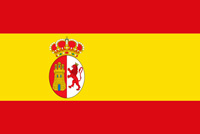 Spain or the Kingdom of Spain, is a country primarily located in southwestern Europe with parts of territory in the Atlantic Ocean and across the Mediterranean Sea. A major country of the Age of Discovery, Spain began the colonization of the New World in 1492 developing one of the largest empires in history and underpinned the emergence of a global trading system primarily fuelled by precious metals. and the Netherlands, led by Marshal Jean-Baptiste Bernadotte, to Denmark to participate in the invasion of Sweden. But British naval superiority prevented the armies from crossing the Øresund strait, and the war came mainly to be fought along the Swedish-Norwegian border. At the Congress of Erfurt (September–October 1808), France and Russia further agreed on the division of Sweden into two parts separated by the Gulf of Bothnia, where the eastern part became the Russian Grand Duchy of Finland.
Spain or the Kingdom of Spain, is a country primarily located in southwestern Europe with parts of territory in the Atlantic Ocean and across the Mediterranean Sea. A major country of the Age of Discovery, Spain began the colonization of the New World in 1492 developing one of the largest empires in history and underpinned the emergence of a global trading system primarily fuelled by precious metals. and the Netherlands, led by Marshal Jean-Baptiste Bernadotte, to Denmark to participate in the invasion of Sweden. But British naval superiority prevented the armies from crossing the Øresund strait, and the war came mainly to be fought along the Swedish-Norwegian border. At the Congress of Erfurt (September–October 1808), France and Russia further agreed on the division of Sweden into two parts separated by the Gulf of Bothnia, where the eastern part became the Russian Grand Duchy of Finland.
The war between Denmark and Britain effectively ended with a British victory at the battle of Lyngør in 1812, involving the destruction of the last large Dano-Norwegian ship—the frigate Najaden.

These books are available for download with Apple Books on your Mac or iOS device
Poland
In 1807 Napoleon created a powerful outpost of his empire in Eastern Europe. Poland had recently been partitioned by its three large neighbours, but Napoleon created the Grand Duchy of Warsaw, which depended on France from the very beginning. The duchy consisted of lands seized by Austria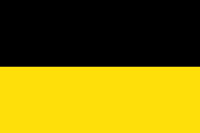 Austrian Empire was a Central-Eastern European and multinational great power from 1804 to 1867, created by proclamation out of the realms of the Habsburgs. During its existence, it was the third most populous monarchy in Europe after the Russian Empire and the United Kingdom. Along with Prussia, it was one of the two major powers of the German Confederation. The empire was proclaimed by Francis II in 1804 in response to Napoleon's declaration of the First French Empire. and Prussia; its Grand Duke was Napoleon's ally the king of Saxony, but Napoleon appointed the intendants who ran the country. The population of 4.3 million was released from occupation and by 1814 sent about 200,000 men to Napoleon's armies. That included about 90,000 who marched with him to Moscow; few marched back. The Russians strongly opposed any move towards an independent Poland and one reason Napoleon invaded Russia in 1812 was to punish them. The Grand Duchy was dissolved in 1815 and Poland
Austrian Empire was a Central-Eastern European and multinational great power from 1804 to 1867, created by proclamation out of the realms of the Habsburgs. During its existence, it was the third most populous monarchy in Europe after the Russian Empire and the United Kingdom. Along with Prussia, it was one of the two major powers of the German Confederation. The empire was proclaimed by Francis II in 1804 in response to Napoleon's declaration of the First French Empire. and Prussia; its Grand Duke was Napoleon's ally the king of Saxony, but Napoleon appointed the intendants who ran the country. The population of 4.3 million was released from occupation and by 1814 sent about 200,000 men to Napoleon's armies. That included about 90,000 who marched with him to Moscow; few marched back. The Russians strongly opposed any move towards an independent Poland and one reason Napoleon invaded Russia in 1812 was to punish them. The Grand Duchy was dissolved in 1815 and Poland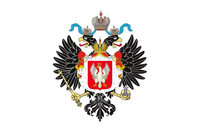 Congress Poland, Congress Kingdom of Poland, or Russian Poland, formally known as the Kingdom of Poland, was a polity created in 1815 by the Congress of Vienna as a semi-autonomous Polish state, a successor to Napoleon's Duchy of Warsaw. It was established when the French ceded a part of Polish territory to the Russian Empire following France's defeat in the Napoleonic Wars. In 1915, during World War I, it was replaced by the German-controlled nominal Regency Kingdom until Poland regained independence in 1918. did not become a state until 1918. Napoleon's impact on Poland was huge, including the Napoleonic legal code, the abolition of serfdom, and the introduction of modern middle class bureaucracies.
Congress Poland, Congress Kingdom of Poland, or Russian Poland, formally known as the Kingdom of Poland, was a polity created in 1815 by the Congress of Vienna as a semi-autonomous Polish state, a successor to Napoleon's Duchy of Warsaw. It was established when the French ceded a part of Polish territory to the Russian Empire following France's defeat in the Napoleonic Wars. In 1915, during World War I, it was replaced by the German-controlled nominal Regency Kingdom until Poland regained independence in 1918. did not become a state until 1918. Napoleon's impact on Poland was huge, including the Napoleonic legal code, the abolition of serfdom, and the introduction of modern middle class bureaucracies.

Polish cavalry at the Battle of Somosierra in Spain, 1808

Polish cavalry at the Battle of Somosierra in Spain, 1808
( Click image to enlarge)
HISTORY
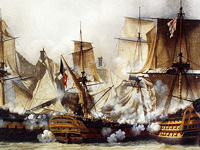
RESOURCES
This article uses material from the Wikipedia article "Napoleonic Wars", which is released under the Creative Commons Attribution-Share-Alike License 3.0.
© Stories Preschool. All Rights Reserved.
